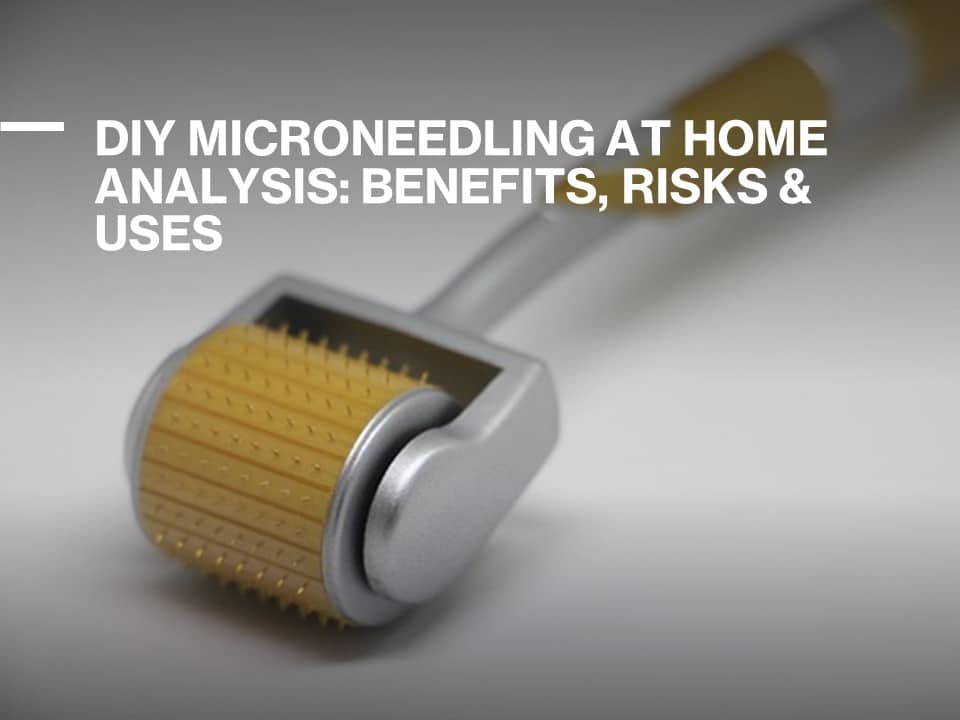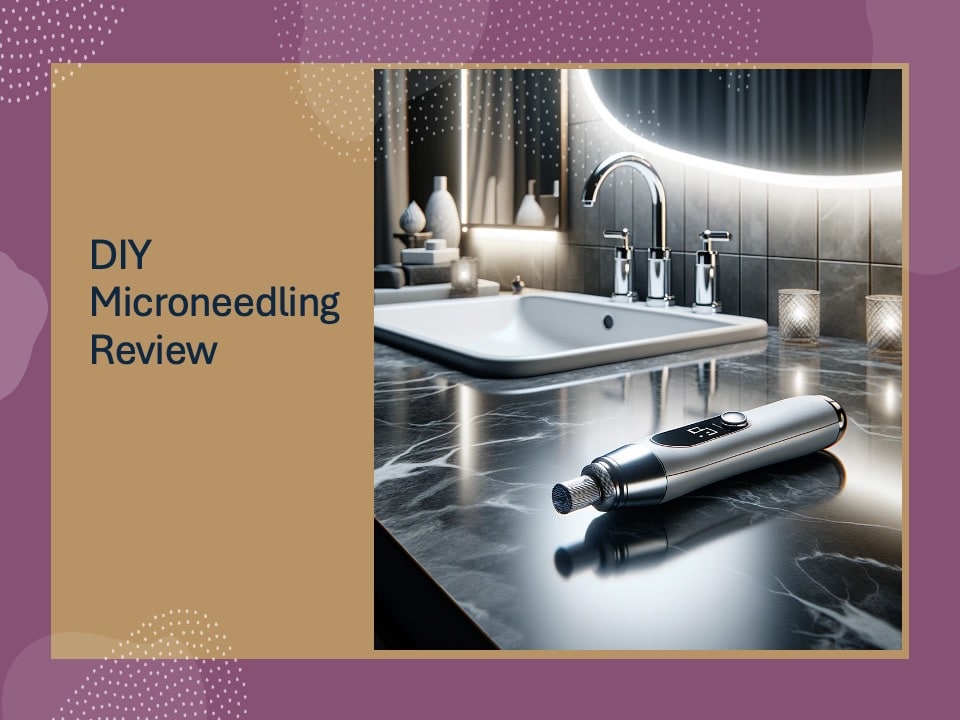DIY Microneedling at Home: Benefits, Risks, and How to Start
As self-care and skincare trends continue to rise, many people are seeking innovative ways to recreate spa-quality treatments at home. One of the most popular treatments to make its way from professional clinics to personal bathrooms is microneedling.
This once-clinical procedure is now accessible to anyone seeking healthier, younger-looking skin without leaving the house.
Microneedling, also known as collagen induction therapy, offers impressive skin rejuvenation benefits, from reducing fine lines to improving acne scars. However, the shift to at-home microneedling has raised essential questions about its safety and effectiveness.
Here’s everything you need to know about DIY microneedling to determine if it’s the right choice for your skincare routine.
What Is Microneedling?
Microneedling is a skin treatment that involves using a tool with tiny needles—such as a dermaroller or derma pen—to create micro-punctures on the skin. These controlled injuries trigger the body’s natural healing process, stimulating collagen and elastin production (Hou et al., 2017).
These two proteins are critical for maintaining firm, youthful skin.
By creating micro-channels in the skin, microneedling can also enhance the absorption of topical skincare products, allowing them to penetrate deeper layers and work more effectively (Aust et al., 2008).
Additionally, microneedling boosts blood circulation, leading to a healthier complexion and reduced appearance of pigmentation (El-Domyati et al., 2015).
Professional Microneedling vs. DIY Microneedling
Microneedling was traditionally performed by licensed dermatologists or aestheticians in a sterile clinical setting. However, with the rise of DIY skincare, at-home microneedling devices have become increasingly popular.
These tools range from basic dermarollers to advanced microneedling pens, offering consumers a cost-effective alternative to professional treatments.
While professional treatments offer the benefits of precision, customization, and safety, DIY microneedling is an attractive option for those looking for convenience and budget-friendly solutions.
Benefits of DIY Microneedling
Whether you’re looking to boost product absorption, reduce signs of aging, or simply enhance your overall skincare routine, DIY microneedling offers several compelling benefits that make it an excellent addition to your beauty regimen.
Cost-Effective
At-home microneedling eliminates the need for frequent clinic visits, saving time and money.
Professional microneedling sessions can range from $200 to $700 per treatment, making DIY microneedling a more budget-friendly option. Over time, the savings add up, especially for individuals who want regular treatments.
By investing in a quality device, you can perform treatments consistently without the recurring expenses associated with professional sessions.
Convenience
You can integrate microneedling into your schedule without leaving home. No more booking appointments or working around a dermatologist’s availability; at-home treatments allow you to maintain a flexible routine.
Whether you have 10 minutes in the morning or before bed, DIY microneedling gives you full control of your skincare schedule.
This flexibility is ideal for those with busy lives who still want to prioritize skincare.
Enhanced Skincare Product Absorption
DIY microneedling improves the absorption of serums and creams, making them more effective (Iriarte et al., 2017). By creating tiny channels in the skin, active ingredients penetrate deeper, ensuring you get the most out of your skincare products.
This means you could see quicker results from your serums, body moisturizers, and other treatments. Ultimately, microneedling can enhance the performance of your entire skincare routine, making it more efficient.
Safety Tips & Precautions
DIY microneedling can give you amazing results, but it’s important to follow a few safety steps to avoid any issues.
- Always start with a clean face and make sure your microneedling tool is properly sterilized before and after each use to prevent infections.
- If you’re new to this, stick with shorter needle lengths and steer clear of using it on any irritated or breakout-prone areas.
- Give your skin time to heal between sessions, and don’t forget to apply sunscreen afterward since your skin will be extra sensitive to the sun.
It’s also a good idea to check in with a dermatologist before for some personalized advice.
Derma Roller vs. Microneedling Pen: Which Is Better?
Derma Roller: Affordable and easy to use, but less precise. Best for surface-level concerns. Derma rollers are a good starting point for beginners, as they are widely available and generally less intimidating than microneedling pens.
However, they may not offer the level of precision needed for treating more targeted skin issues like deep scars. Additionally, because derma rollers have fixed needle lengths, they may not be as versatile for different skin areas.
Microneedling Pen: Offers adjustable needle depths, making it suitable for deeper skin issues and more consistent results. With its adjustable settings, a microneedling pen allows for more customization, ensuring that different areas of the face or body receive the appropriate treatment.
It is ideal for tackling specific issues such as deep acne scars or wrinkles, as you can adjust the needle length to suit your skin’s needs. Although microneedling pens are more expensive, they offer greater versatility and superior outcomes compared to derma rollers.
Best DIY Microneedling Device (2025)
One of the best microneedling devices for home use is the Dr. Pen Ultima M8S Professional Microneedling Pen. Known for its versatility and ease of use, the Dr. Pen Ultima M8S allows users to achieve salon-quality results at home.
- Dual Mode Operation: This pen can be used both wired and wirelessly, providing flexibility for face and body treatments.
- Variety of Cartridges: It comes with 18-pin and 36-pin cartridges, allowing for customized treatments based on your needs.
- Professional-Grade Results: Designed for both professional and home use, it’s ideal for users who want a device with high performance.
Last update on 2025-04-15 / This article includes affiliate links/Images via Amazon Product Advertising API. I may earn commissions on purchases made through these links.
Final Thoughts: Is DIY Microneedling Effective?

DIY microneedling can be a powerful tool in your skincare routine when used correctly. However, it is not a substitute for professional treatments, especially for severe skin issues. Always consult a dermatologist before incorporating DIY microneedling into your regimen to ensure safety and effectiveness.
FAQs
- What is DIY Microneedling?
DIY microneedling uses a home device to create tiny punctures in the skin, stimulating collagen production and improving product absorption. - Is DIY Microneedling Safe?
Yes, but only when done with the right technique and hygiene. Always sanitize your device and follow instructions carefully. - Can DIY Microneedling Replace Professional Treatments?
No, DIY microneedling is best for maintenance and minor issues, while professional treatments address more severe skin conditions.
By understanding the benefits and risks of DIY microneedling, you can safely enhance your skincare routine and get healthier skin!




